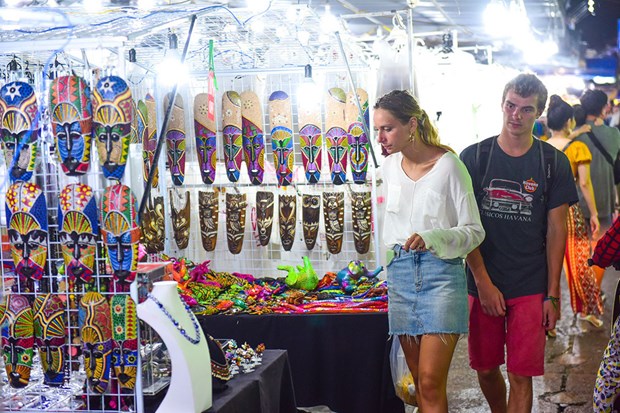
Although the domestic tourism is bouncing back, travel agencies still emphasise the need to open border for tourists from certain countries to reboot the industry.
Although the domestic tourism is bouncing back, travel agencies still emphasise the need to open border for tourists from certain countries to reboot the industry.
A representative from the Ho Chi Minh City Tourism Association said the implementation of “COVID-19 vaccine passport” would make a step forward in tourism recovery.
Tour operators have suggested piloting the reopening in easy-to-control and remote areas, launching charter flights to take tourists to certain sites while limiting travelling to various destinations, and administering COVID-19 vaccines to employees there.
Huynh Phan Phuong Hoang, Deputy Director General of Vietravel, said while the Government is weighing on the matter, Vietnam needs to promote its image as a safe destination that is ready to welcome international holidaymakers back.
McKinsey & Company, a global management consulting firm, said Vietnam’s tourism sector relies heavily on international travel, which plunged last year. International flights dropped 80 percent in October 2020 from the same time period a year earlier.
The sharp drop in foreign travelers has had an outsize impact on tourism expenditures—and Vietnam’s overall economy—because they spend significantly more than their local counterparts.
In 2019, a year in which the tourism industry accounted for 12 percent of the country’s GDP, international travelers made up only 17 percent of overall tourists in Vietnam, yet accounted for more than half of all tourism spending - averaging 673 USD per traveler compared with 61 USD spent on average by domestic travelers.
According to the firm, the majority of Vietnam’s international tourists come from Asia, with those from China, Japan, the Republic of Korea (RoK), and Taiwan accounting for around 80 percent of Vietnam’s foreign tourism spending.
Vietnam’s strong economic ties with these countries could lead to a relatively fast tourism-industry recovery compared with other key tourist destinations in Europe and North America, it said.
Domestic tourism has shown clear signs of recovery. Tran Trong Kien, Chairman of the National Tourism Advisory Board, cited a latest survey as saying that more than 83 percent of Vietnamese said they are ready to travel in the next seven months, especially during the summer holiday, and more than 72 percent chose air travel.
To ensure a safe trip for guests, travel companies affirm that they are implementing anti-pandemic regulations of the Ministry of Health for the tourism sector./.
(Source:VNA)
A representative from the Ho Chi Minh City Tourism Association said the implementation of “COVID-19 vaccine passport” would make a step forward in tourism recovery.
 |
| Vietnam’s tourism sector relies heavily on international travel, which plunged last year. (Photo: dulich.tuoitre.vn) |
Tour operators have suggested piloting the reopening in easy-to-control and remote areas, launching charter flights to take tourists to certain sites while limiting travelling to various destinations, and administering COVID-19 vaccines to employees there.
Huynh Phan Phuong Hoang, Deputy Director General of Vietravel, said while the Government is weighing on the matter, Vietnam needs to promote its image as a safe destination that is ready to welcome international holidaymakers back.
McKinsey & Company, a global management consulting firm, said Vietnam’s tourism sector relies heavily on international travel, which plunged last year. International flights dropped 80 percent in October 2020 from the same time period a year earlier.
The sharp drop in foreign travelers has had an outsize impact on tourism expenditures—and Vietnam’s overall economy—because they spend significantly more than their local counterparts.
In 2019, a year in which the tourism industry accounted for 12 percent of the country’s GDP, international travelers made up only 17 percent of overall tourists in Vietnam, yet accounted for more than half of all tourism spending - averaging 673 USD per traveler compared with 61 USD spent on average by domestic travelers.
According to the firm, the majority of Vietnam’s international tourists come from Asia, with those from China, Japan, the Republic of Korea (RoK), and Taiwan accounting for around 80 percent of Vietnam’s foreign tourism spending.
Vietnam’s strong economic ties with these countries could lead to a relatively fast tourism-industry recovery compared with other key tourist destinations in Europe and North America, it said.
Domestic tourism has shown clear signs of recovery. Tran Trong Kien, Chairman of the National Tourism Advisory Board, cited a latest survey as saying that more than 83 percent of Vietnamese said they are ready to travel in the next seven months, especially during the summer holiday, and more than 72 percent chose air travel.
To ensure a safe trip for guests, travel companies affirm that they are implementing anti-pandemic regulations of the Ministry of Health for the tourism sector./.
(Source:VNA)




